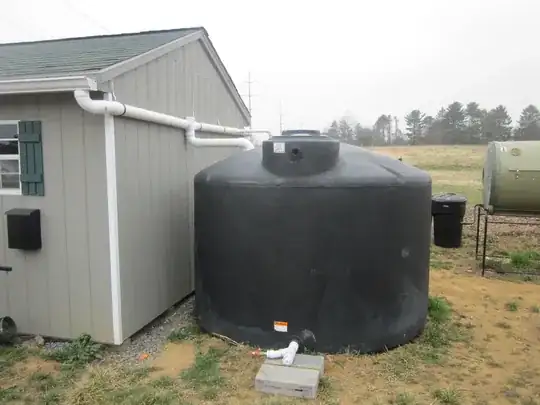We have a large roof-fed rain cistern, approximately 1500 gallons. Make, model, and material were not obvious to me, though I can look harder if needed. It looks similar to this:

It would be nice to use it for collection of snowmelt, as some of our trees need water over the winter. Also, springtime can be very dry here, so I would like to collect in late winter / early spring for use in late spring.
I don't mind if it freezes solid for a while. However, I do mind if it is broken by freezing.
Therefore, my questions are:
- Do I need to winterize it at all?
- If yes, when would it need to be winterized? (For example, I could winterize when the average temperature goes below freezing, and un-winterize as soon as it rises above.)
It's in a fairly shady spot in our yard. On the coldest day of the year in our climate (northern New Mexico), the average low is 23°F and the average high is 36. Record low is 6 below. Almost all winter days are sunny.